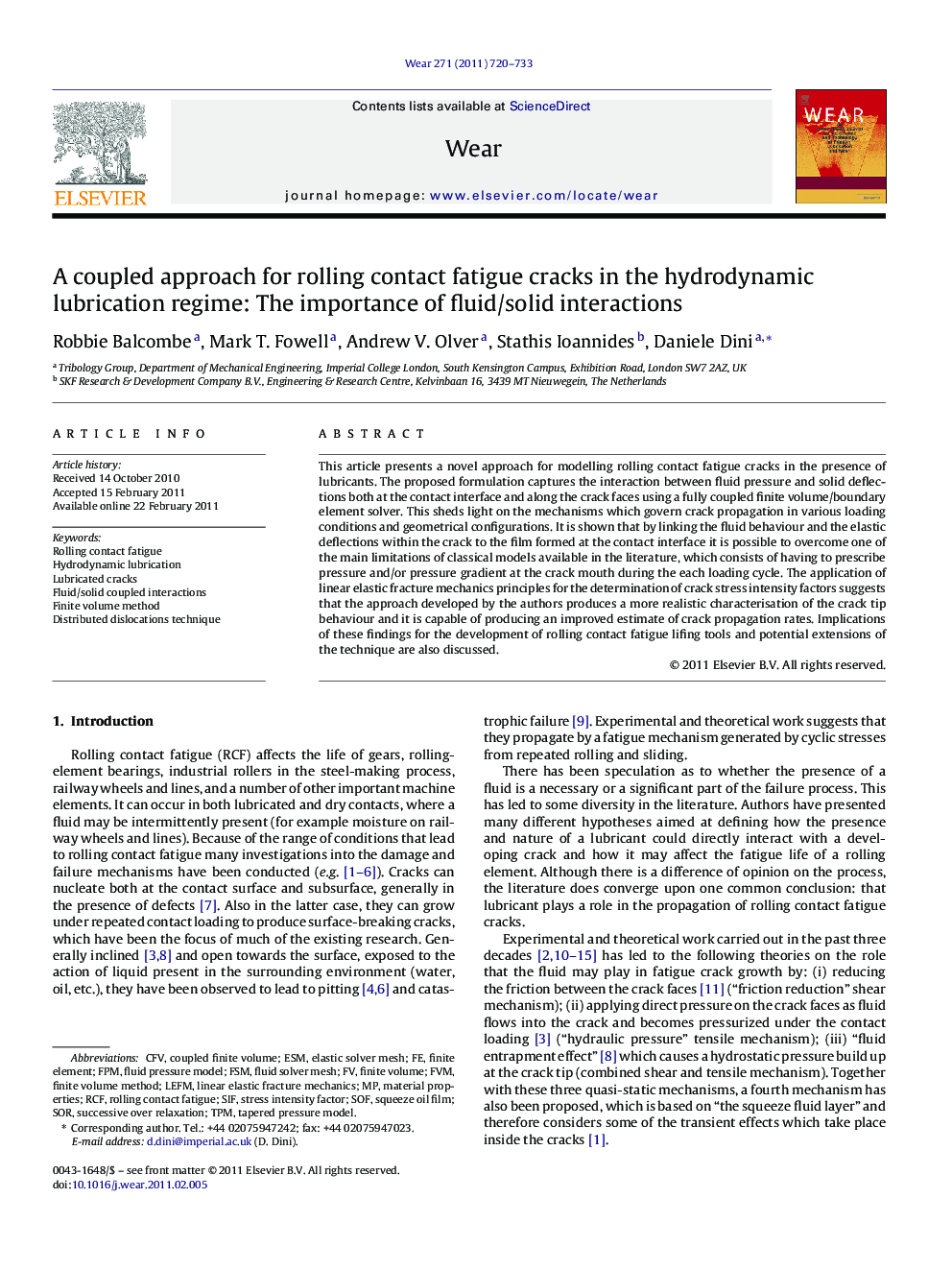| Article ID | Journal | Published Year | Pages | File Type |
|---|---|---|---|---|
| 618064 | Wear | 2011 | 14 Pages |
This article presents a novel approach for modelling rolling contact fatigue cracks in the presence of lubricants. The proposed formulation captures the interaction between fluid pressure and solid deflections both at the contact interface and along the crack faces using a fully coupled finite volume/boundary element solver. This sheds light on the mechanisms which govern crack propagation in various loading conditions and geometrical configurations. It is shown that by linking the fluid behaviour and the elastic deflections within the crack to the film formed at the contact interface it is possible to overcome one of the main limitations of classical models available in the literature, which consists of having to prescribe pressure and/or pressure gradient at the crack mouth during the each loading cycle. The application of linear elastic fracture mechanics principles for the determination of crack stress intensity factors suggests that the approach developed by the authors produces a more realistic characterisation of the crack tip behaviour and it is capable of producing an improved estimate of crack propagation rates. Implications of these findings for the development of rolling contact fatigue lifing tools and potential extensions of the technique are also discussed.
Research highlights► Fully coupled fluid–solid solver for RCF lubricated cracks developed. ► Transient analysis of crack deformation and fluid flow performed. ► Stress intensity factors compared to uncoupled methodologies from the literature. ► Implications in terms of RCF life prediction discussed.
